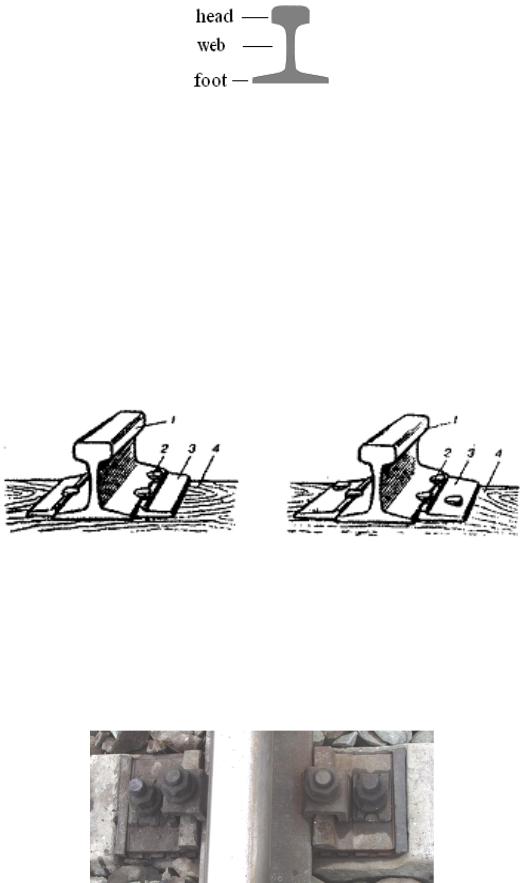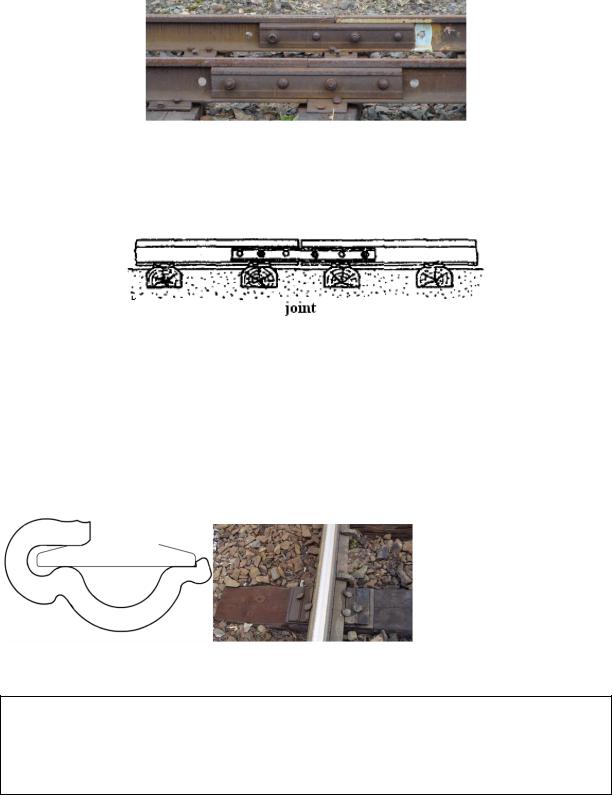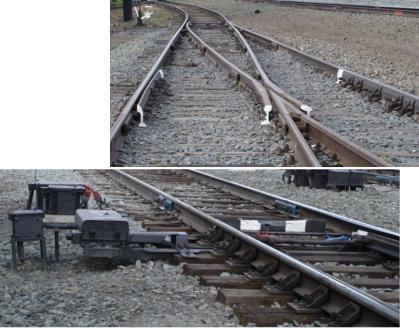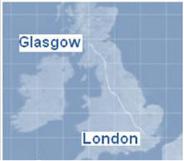
m0938
.pdfW r i t i n g
Exercise 1. Read about Trans-Korean Mainline andwrite an abstract of the passage.
THE TRANS-SIBERIAN MAINLINE PROJECT:
A HISTORICAL ANALYSIS
A. Y. Chernov
Siberian Transport University, Novosibirsk
The problem of the Trans-Siberian Mainline project of cooperation between Russia and South Korea to develop the resource base of the Far East and Siberia is one of the most pressing issues facing today’s transportation infrastructure. In particular, it is about the formation of a multi-modal transportation hub. The solution of the problem has its history.
In the 1990s trade expanded rather rapidly partly driven by innovations in the IT sector. This process of international integration in commodity, capital and labour markets is known as globalisation. The prominent role played by the industrial economies in world trade exports up to the 1990s was closely linked to their large share in exports of manufactured goods. The long-term shifts in the composition of world trade show a strong rise in the share of manufactured goods. As the result, the idea of the Iron Silk Road project appeared. Goods from South Korea to Europe expected to be transported by rail through the longest Asian corridor of over 10,000 km faster and cheaper than by sea.
Since the trade volume reached its record level of 23 billion USD last year there is an attempt to build a modern railway connecting the Pacific Ocean and Europe. According to estimations of some South Korean forwarders the early stage of the project will be profitable for both parties if they arrange the process properly. The Russian party has invested the preparatory stages, and experts from Siberian Transport University in jointly with scientists of the Institute of Economics and Industrial Engineering are currently engaged in experimental calculations to identify the comparative effectiveness of competing versions of the project.
In conclusion it should be mentioned that the current political situation in Korea is unstable. However, taking into consideration geographical, political and economic factors it makes sense to think about other possible routes. IT can optimise this process by creating simulation programmes to weigh up the advantages and disadvantages of these alternatives.
Exercise 2. Write your own passage about one of the world famous railways (1214 sentences).
W e bP r o je c t
Create a timeline comparing Russian, US and Canadian railroad history. The following sites may help you:
http://www.geographia.com/russia/trasib01.htm http://en.wikipedia.org/wiki/History_of_rail_transport
31

UNIT 5. THE RAILWAY TRACK
R e a di n g a n d tr a ns l a t i o n
Exercise 1. Study the drawing to complete the sentences.
The railway track is laid on the ……….. (1) supported by the………(2). The track and ballast form ………..(3).
Exercise 2. Before you read answer the following questions.
1)What is the standard length of rail in Russia?
2)What are rails made of?
3)What is the clear distance between the rails (the gauge) in Russia?
4)What is the best material for ballast?
5)Where is the ballast placed?
Exercise 3. Now scan the passage below the table to check your answers. Then read the passage again and fill in the table.
Components of the |
made of |
used for |
must be made |
permanent way |
|
|
|
|
|
|
|
Rails |
|
|
strong, … |
|
|
|
|
Sleepers |
|
|
|
|
|
|
|
Ballast |
|
|
|
|
|
|
|
Fastenings |
|
|
|
|
|
|
|
THE PERMANENT WAY
To some people “the permanent way” is an exciting and romantic phrase reminding them of railway lines, all shiny and heading off to a vanishing point in the shimmering distance. But the permanent way is, of course, the structure consisting of the rails, sleepers (UK), or ties (US), ballast, fasteners, or fastenings, including rail anchors, as well as turnouts, bridge timbers, and crossing sleepers. The permanent way has to be made strong, stable and to provide safety and smooth running of passing trains.
Complete sections of track – rails and sleepers – may be prefabricated and laid in the track by mechanical means.
Rails. Rails guide wheels of rolling stock. Railway rails are subject to very high stresses and have to be made strong, durable, and reliable. Heavier rail can support heavier and faster trains than lighter rail. Rails are made of very high quality steel alloy including iron (Fe), carbon (C), manganese (Mn), silicon (Si), and phosphorus (P).Rail consists of a head, a web, and a foot (or base) (see Fig. 1).
32

Fig. 1. Cross-section of rail
In Russia, rail is graded in kilograms per metre (kg/m). Standard rail types are R50, R65, and R75. The choice of a rail type depends on traffic density, axle loads, and train speeds. Rails are produced of a standard length of 25 metres. Besides, shorter rails are used on curves and turnouts.
Like other components of the permanent way, worn heavy rails from a mainline are often reused on branch lines, sidings and yards.
One of the most important developments is the welding of standard rails into long lengths. This continuous welded rail results in a smoother track that requires less maintenance.
The gauge, the clear distance between the rails, in Russia is 1520 mm.
Fastenings. Anchors. The rail and the chair are fixed to the wooden sleeper with the spike, a large nail with an offset head. Besides, the chair itself can be fixed to the sleeper with an additional spike (see Fig. 2).
Fig. 2. Fastenings for wooden sleepers 1 – rail; 2 – spike; 3 – chair; 4 – sleeper
The method of separate fastening for concrete sleepers is not as cheap and simple as the previous one, but it has a number of advantages. It gives greater resistance to loosening and keeps the rail in gauge. In addition, it does not require measures to prevent rail creeping. The rail is fixed to the chairs with the clips and the clip bolts, and the chairs to the sleepers – with the bolts and the screws (see Fig. 3).
Fig. 3. Fastenings for concrete sleepers
33

The rails are bolted to each other by means of fishplates to make a continuous rail line. The bolts (usually four, but sometimes six bolts per joint) may be oppositely-oriented. They pass through holes in a rail web and a fishplate (see Fig. 4).
Fig. 4. The bolts
The place where ends of rails meet is called a joint (see Fig. 5). In hot weather rails expand, so a small gap is left between rails which does not exceed 21mm.
Fig. 5. Rail fastenings
Insulated joints are required on track circuit sections so that the electric current cannot flow from one rail to another. There are two types of insulated joints: 1) joints with joint liners and 2) glued joints, where all the gaps are filled with epoxy resin.
To prevent the rail creeping, anchors are used. There are spring anchors and wedge anchors. A spring anchor is lighter than a wedge one, consists of only one part, is successfully used both on single and double track lines, and requires less maintenance (see Fig. 6).
Fig. 6. A spring anchor
Did you know?
A sleeper in the UK is called a tie (or a crosstie) in the USA.
A point in the UK is known as a switch in the USA, a point blade as a switch rail, a crossing sleeper as a crossing tie, a crossing as a frog.
Sleepers. Sleepers, supports for the rails, transfer loads to the ballast and subgrade, hold the rails upright, and keep them spaced to the correct gauge. Traditionally, sleepers (known as
34

ties in the US) are wooden. Wooden sleepers are normally treated with preservative to improve its life. They are easy to cut and drill and used to be cheap and plentiful. Concrete sleepers are much heavier than wooden ones, so they resist movement better. They offer less flexibility and can crack more easily under heavy loads. They also have the disadvantage that they cannot be cut to size for turnouts. Steel sleepers are used on more lightly used railways.
Ballast. Ballast is used to transfer (distribute) the load from the sleepers and to support the considerable loading of passing trains.The ballast also serves as a means of drainage (keeping water away from the rails and sleepers). Ballast material has to be strong, rough in shape, hard-wearing, resistant to deformation, stable and cheap. The best material for ballast is crushed rock with particles between 25 mm and 60 mm and between 25 and 50 in diameter. Other materials such as gravel, asbestos, shells, sand are also used. Ballast is packed between, below, and around the sleepers. Ballast is laid to a depth of 25 to 35 cm below wooden sleepers and of 30 to 40 cm below concrete ones.Periodically, ballast must be cleaned or removed and replaced with clean ballast to provide good drainage.
Turnouts. Turnouts, also known as points (UK) and switches (USA), are the means of directing a train from one track to another (see Fig. 7).
Fig. 7. A turnout
The most common type is a simple turnout. The moving part of the turnout is the point blade, one for each route. The blades of a turnout are moved remotely using an electrically operated point machine located to one side of the track. The two blades are fixed to each other by a tie bar to ensure that when one is against its stock rail, the other is fully clear and will provide room for the wheel flange to pass through cleanly. Either side of the crossing area, wing and check rails are provided to assist the guidance of the wheelsets through the crossing.
Exercise 4. Translate the paragraph about a turnout into Russian. Use a dictionary.
Exercise 5. Render the passage in English. Use the clichés.
35

L i s te ni n g
Exercise 1. You are going to watch a video about the modernisation of the West Coast Main Line. The first phase of the upgrade opened in 2004. December 2008 saw the final completion of the modernisation project. Before you watch look at the map and say where the West Coast Main Line runs.
Exercise 2. Answer the questions. Then watch and check your answers.
1)The West Coast Main Line is the busiest mixed-traffic railway route in Britain. What do you think the word “mixed-traffic” means?
2)Why do you think the WCML is the most important railway in Britain?
Exercise 3. While watching do the following tasks.
Track 1
a) Put in numerals.
In Europe, ………. (1) people travel by rail every week, over ………. (2) in the UK. Great Britain’s West Coast Main Line is ………. (3) kilometers long. It dates back ………. (4) years. It is now being replaced piece by piece like a giant jigsaw puzzle at a cost of over
………. (5) dollars.
Track 2
a) Complete the sentences with the words from the box.
retaining |
walls |
track |
flyovers |
station |
embankments |
|
|
|
|
|
|
Elsewhere on the route they are upgrading a new ………. (1). Over 1,000 metres of new
………. (2), 800 metres of ………. (3), and two new ………. (4) are needed. They are also resignalling over 12 km of ………. (5).
b)Explain why the modernization of the WCML was required by the early 21st century.
c)Give facts to prove that the WCML is the most important railway in Britain.
Track 3
a)Answer the questions.
1)What is the output rate (производительность) of the track-relaying machine?
2)What is the drawback of the track-relaying machine?
3)What is the output rate of the tamper?
4)What speed do trains develop on the West Coast Main Line?
36
b) Find and correct four mistakes in the passage.
The green PERL covers over 8,000 kilometres of track every day collecting vast amounts of data. The information gathered is used for the development of new systems. One of these uses laser to take a cross-section of the track in real time to millimeter accuracy as the train is travelling at over 160 km per hour. All data is linked to the GPS-system, so the engineers can locate faults with pin-point accuracy.
Tracks 1, 2, 3
a) Write down the verbs which are used to describe the process of modernising the track.
b) The names of which machines can you hear while watching the video?
a tamper |
a crane |
a track stabiliser |
a track-relaying train |
a ballast cleaner |
a track-renewal machine |
a bulldozer |
a measurement machine |
a rail-grinding machine |
|
|
|
c) Read the statements and fill in the blanks with the proper machines.
1) …………………. It carries 27 concrete sleepers at a time. It can lay over 400 metres of
track every hour. |
|
|
||
2) |
…………………. Its job is to straighten the track. |
|
||
3) |
…………………. It collects data and help engineers to locate defects. |
|||
d) Choose the correct word to fill in the sentences. |
|
|||
|
|
|
|
|
|
Considerable / considerably |
essential / essentially |
incredible / incredibly |
|
|
|
|
|
|
1)And …………., the biggest civil engineering project ever carried out in Europe takes place almost entirely on weekends. (Track 1)
2)…………., 43 % of all Britain’s rail freight is transported on the London and Glasgow Line. (Track 2)
3)With hundreds of trains and over quarter of a million passengers using this line every day, it is …………. that the railway runs to the timetable. (Track 2)
4)It’s …………. that everything is checked and rechecked. (Track 2)
5)Without this piece of equipment the West Coast programme would take …………. longer to complete. (Track 3)
e) Put the verbs in brackets in the correct passive form.
1)The WCML …………. now ………….. (replace) (Track 1)
2)It …………. never …………. for the speed of today’s trains or the capacity that ………on it. (design; impose) (Track 2)
3)Incredibly, 43 % of all Britain’s rail freight…………. on the London and Glasgow Line.
(transport) (Track 2)
4)Over 1000 metres of new embankments, 800 metres of retaining walls, and two new flyovers ………….. (need) (Track 2)
5)It’s essential that everything …………. and ………….. (check; recheck) (Track 2)
6)Maintenance is an on-going practice on the railway, wear and tear of the line has to
………….day by day. (monitor) (Track 3)
37
L a n gu a ge s p o t
P a s s i ve V oi c e
Exercise 1. Put the verb into the correct form to fill in the gaps.
1)The track is supported by ballast. (support)
2)The track ….. by machines. (lay)
3)Rails ….. of steel. (make)
4)Periodically, ballast must …. . (clean)
Exercise 2. Write a passive sentence.
1)This method does not require additional measures. Additional measures are not required
(due to this method).
2)In the earlier days of railway construction, workers often laid a temporary track to transport materials. In the earlier days of railway construction, a temporary track ……………………...
3)Track machines do all the necessary track maintenance tasks.
4)Rails guide wheels of rolling stock.
5)The sleepers support the rails.
6)Continuous welded rails provide a smoother running of trains.
7)North America and most of Europe use the standard gauge of 4 feet 8 1/2 inches.
Exercise 3. Write questions using the passive. Then ask and answer the questions.
1)Ask about rails. (fix) How ………?
2)Ask about wooden sleepers. (treat) What ……. with?
3)Ask about ballast. (use) What ……. for?
4)Ask about rail anchors. (fit) Where ……..?
W r i t i n g
Exercise 1. Read the passage and write answers to these questions.
1)What are the functions of the track?
2)Why does the railroad track require continuous monitoring?
3)What track machines are used?
Track is a fundamental component of the railroad. Railroad track is designed to guide the train while evenly distributing its weight and providing adequate drainage. Metal wheels of the passing trains pound against metal rails and inevitably take a toll on a railroad’s track structure. Mother Nature, too, effects the track as heavy rains and fluctuating temperatures leave rails, ties, and the supporting ballast vulnerable to dangerous defect. Track weakened by these attacks can mean bumpy rides, or worse – deadly derailments. Locating and repairing such potential danger spots falls to a group of trained maintenance workers and their specialized machinery. Beginning with the defect-detection cars to modern track geometry cars, all railroads must monitor their lines for abnormalities in gauge, profile, or alignment. In some cases a defect is discovered that requires the deployment of a tie gang, with its parade of tie cranes, spike pullers, and other impressive machinery. Laying and smoothing ballast along the tracks brings in the ballast regulators and tampers. And you can be amazed by the awesome sight of a rail grinder traveling along the rails, sparks flying beneath it, or of a rotary plow blowing several feet of snow from the tracks. The work involved in keeping railroads running includes inspecting, maintaining, and repairing track and its components. Monitoring
38
the conditions of the track and all its components is an essential part of effective railroad maintenance.
B. Solomon Railway Maintenance: The Men and Machines that Keep the Railroads Running http://books.google.ru/books?id=6zB-co8PLiYC&printsec=frontcover&hl=ru#v=onepage&q&f=false
Exercise 2. Answer the questions and write a passage about the components of a permanent way. These sites may help.
1)Where does the British term ‘the permanent way’ come from? http://en.wikipedia.org/wiki/Permanent_way_(history)
2)Where does the term “ballast” come from?
http://english.turkcebilgi.com/track+ballast
3)Why was the distance between the rails of the early British lines 4 feet 8.5 inches (now the world’s standard gauge) and not 5 feet?
http://books.google.ru/books?id
4)Why did Russia adopt the gauge of 5 feet and not 4 feet 8.5 inches which was common throughout Western Europe? http://www.britannica.com/EBchecked/topic/489715/railroad/64365/The-railroad-in- continental-Europe
W e b P r o j e c t
Get information to make a short presentation to your class on the aspects of a gauge.
1)The world standard gauge.
2)The standardisation of gauge in North America.
3)A narrow gauge. A wide gauge. Countries with different gauges.
4)The gauge problem.
These sites may help:
http://en.wikipedia.org/wiki/Rail_tracks
http://en.wikipedia.org/wiki/Glossary_of_rail_terminology
UNIT 6. MOTIVE POWER
R e a di n g a n d tr a ns l a t i o n
Exercise 1. Read the passage and answer the following questions.
1)How is motive power provided for trains?
2)What does the word ‘self-sufficient’ mean?
3)What is an important drawback of diesel locomotives?
4)What is the greatest drawback of electrification?
MOTIVE POWER
Vehicles which provide motive power to haul trains include locomotives and motor coaches. Motive power is classified into:
– self-sufficient units which generate their own power from fuel such as diesel locomotives, gas turbine locomotives, locotractors, diesel trains, turbotrains, railcars, and steam locomotives;
39
–not self-sufficient units which take power from an outside source of electricity such as electric locomotives and electric trains.
Locomotives are subdivided in their usage in rail transport operations into:
–mainline locomotives
a)goods (freight) locomotives,
b)passenger locomotives,
c)mixed traffic locomotives;
–shunting locomotives/shunters;
–locomotives for both line and shunting operations.
These categories determine the locomotive’s size, starting tractive effort and speed.
A number of diesel or electric units can be combined according to the power needed for a particular train with only one crew required for all the units.
Electric locomotives. Unlike diesel locomotives, which produce their own power, electric locomotives convert the electric power that is generated elsewhere.
Electric locomotives can be divided into those using alternating current (AC) and those using direct current (DC). They pick up current from an overhead wire. An electric locomotive consists of a mechanical part, electrical and pneumatic equipment. A mechanical part comprises a body, bogies, brake equipment, and coupling and drawgear. A body is usually of all-metal construction and contains electrical equipment. A body is supported on 2- or 3-axle bogies, and they, in turn, on wheel sets. Bogies are composed of frames with traction motors on them.
An electric locomotive has a number of advantages:
–It can develop greater power compared to diesel locomotives.
–It is cleaner and quieter in operation.
–It requires little time in the shop for maintenance.
–Its maintenance costs are low.
–It has a longer life than diesels.
The greatest drawback of electrification is the high capital investment and maintenance cost of traction substations and overhead wires.
Electric trains. Electric trains are used for suburban and intercity passenger service on electrified lines. They are formed of 4, 6, 8, 10 or 12 motor coaches and trailers.
The term multiple unit or MU is used to describe self-propelled coaches (carriages, cars) coupled with other units and controlled from one driving cab. MU coaches can be motor units (motor coaches) or trailer units. Multiple units are classified by their power source and are of two main types: electric multiple unit (EMU) and diesel multiple unit (DMU).
Diesel locomotives. A diesel locomotive has its own power supply unit (usually a diesel engine). A diesel is an internal combustion engine with the efficiency of 40-42%. This engine drives the wheels by mechanical, hydraulic or electric transmission. Of the three, electric transmission is most popular.
A diesel locomotive has a number of advantages:
–Being self-sufficient it is not connected with an overhead wire.
–It can be operated in any climate.
–It does not require costly catenary and traction substations.
A diesel locomotive has also a number of disadvantages:
–It pollutes the environment.
–It has a great number of friction parts.
40
